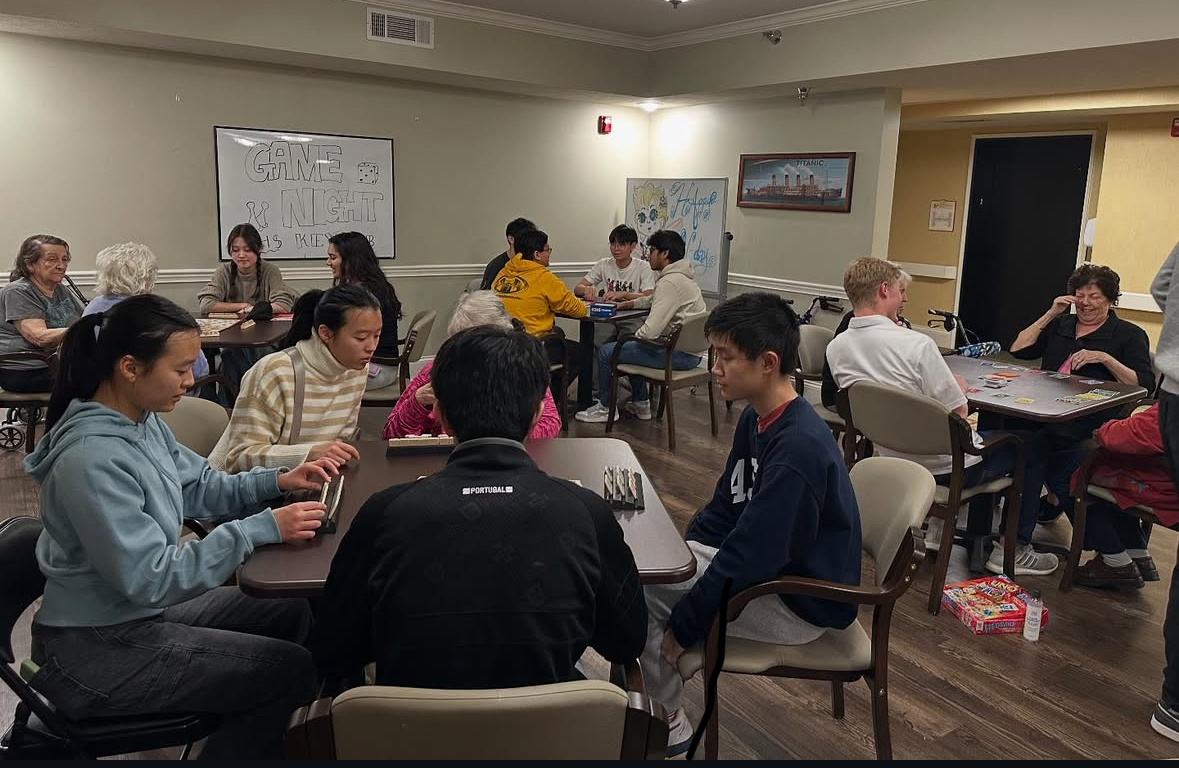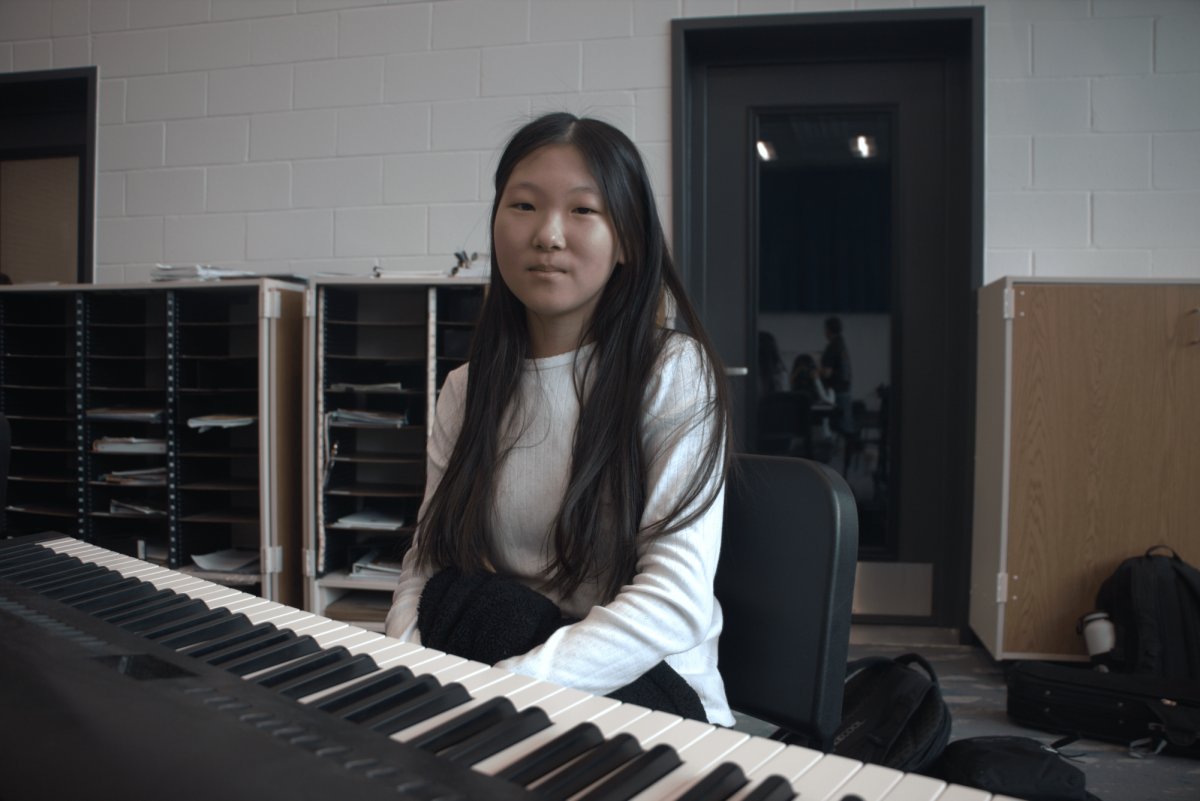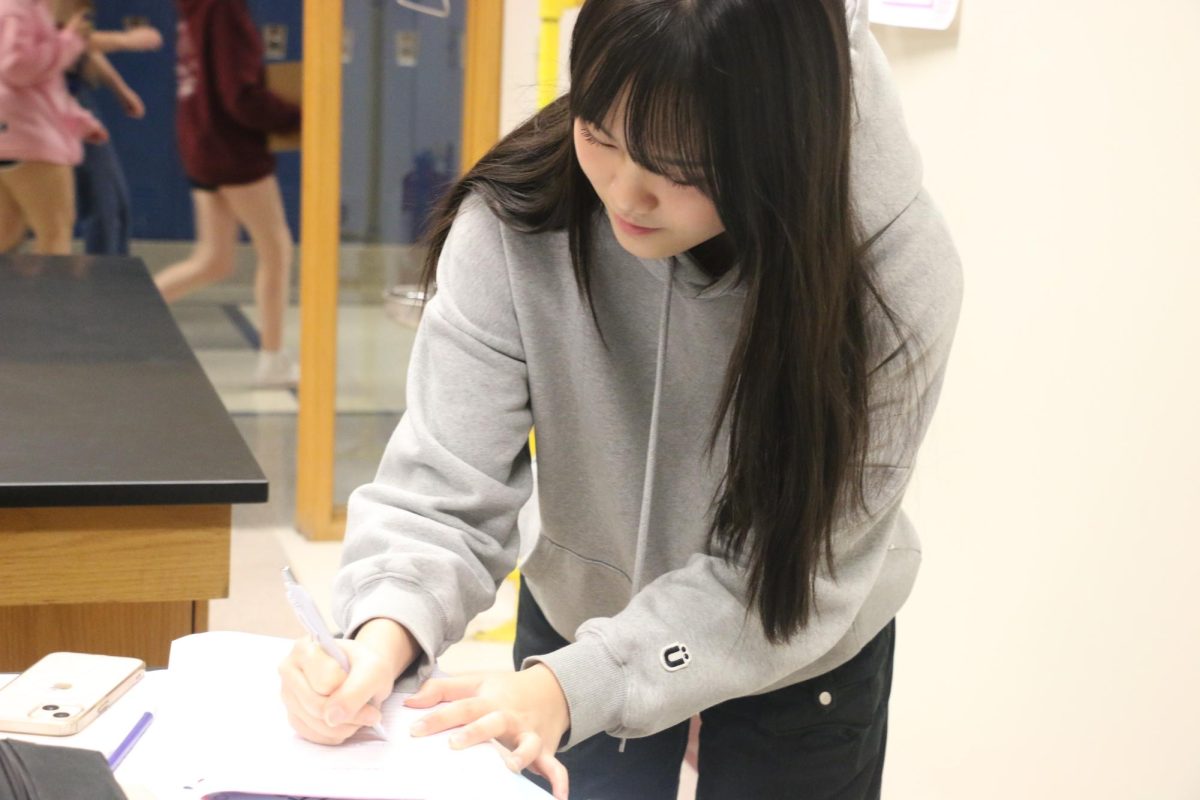Athletics is a crucial part of many high school students’ daily schedules. In fact, according to the Centers for Disease Control and Prevention, 57% of high school students play on at least one sports team. As athletics continue to play major roles in students’ lives, advances in sports-related technology have greatly improved the quality of games and practices. For Braedon McIntyre, tennis player and senior, technology is an integral part of his practice routine.
“A lot of the time our coaches set up cameras to record (practices and matches),” he said. “From there, (the coaches) have us watch the films to notice where we’re hitting, our target location and stuff like that. It’s usually just for review to prepare us for our matches.”
According to Daniel Brunette, head coach for the men’s and women’s tennis teams, analyzing films helps players improve and work on their skills.
“We use iPads to film all five of the varsity matches and then the coaches and I will watch the film when we have time, especially if there’s common opponents. Also, if there’s something I see on film, I can cut pieces out of it and look at individual clips with players or doubles teams to show them what’s going on,” Brunette said. “We also use it when the guys are playing poorly, so I’ll have them watch (the films) and take notes, then bring (the notes) back to me in a timely fashion, so we can figure out what’s actually going on. So, the technology certainly helps in that regard.”

Additionally, swimmer and sophomore Samantha Simmons said the women’s swimming team uses technology for timekeeping during meets.
“We use (touchpads) so the coaches can see how fast we’re going, ” she said. “When you’re racing and you finish you have to hit the touchpad and then it says what time you got.”
Although technology has improved the quality of practices, occasional malfunctions do occur. McIntyre said there was one time where the film length far exceeded the length of the match.
“There was one funny moment where one of our cameras kept recording for 18 hours, so we had an 18-hour recording after the match,” he said. “Half the time we end up putting in a program that analyzes what kinds of shots we’re hitting. It works really well, there haven’t really been any issues.”
Brunette said there have been some technical issues with filming matches.
“iPads aren’t perfect,” he said. “Sometimes we’ve had issues with the battery dying or them just turning off. It’s pretty windy out in tennis courts, since there’s usually nothing blocking the wind, so sometimes the wind will kind of push (the iPads) down, sometimes we can’t film well, so we’ll have to set up (the iPads) and look at two or three courts at a time.”
However, Brunette said along with new technology, the tennis teams also chart every match.
“We’re kind of old school in the sense we chart every match on paper. I’ve charted every doubles match in the 17 years I’ve been coaching,” he said. “We still do paper charts, they are very effective and we know how to read them. We also teach the managers how to chart accurately, so we’ve always had data, but (now) players are able to go back and see (how their playing) looks like.”
Likewise, Simmons said the swim team has backup strategies in place when the touchpads don’t work as intended.
“If you touch (the touchpad) too lightly, then the touchpad will mess up your time, and the (time the backup person writes) will go in the computer system,” she said. “We have people doing backup timers so we get the right times (in case something goes wrong).”
Overall, McIntyre said technology is an effective tool to reflect on a player’s strengths and weaknesses.
“(Technology) can be pretty effective,” he said. “Our coaches are trying to push it more because it’s good to see yourself play and (look) at what areas you might be missing in games or what you’re focusing in on too much. It’s also important as you can see how your opponents play.”
Simmons also said swim meets have become much more efficient with timing devices available.
“We kind of need (touchpads) at meets because otherwise a three-hour meet would turn into an eight-hour meet,” she said. “It makes racing go by so much faster because all the actual timers don’t have to physically write everything down.”
Ultimately, Brunette said the tennis teams greatly improve from watching films and analyzing their plays.
“I’m not going to say (technology) is the end-all-be-all because myself and the coaches have trained eyes, so we can see what’s going on,” he said. “But it’s certainly really helpful as a tennis player being able to see yourself play. It can be nerve wracking, frustrating and a little bit awkward at times, but at the same time it’s really the best way to learn what you’re doing well and what you need to work on.”

































![AI in films like "The Brutalist" is convenient, but shouldn’t take priority [opinion]](https://hilite.org/wp-content/uploads/2025/02/catherine-cover-1200x471.jpg)









































![Review: “The Immortal Soul Salvage Yard:” A criminally underrated poetry collection [MUSE]](https://hilite.org/wp-content/uploads/2025/03/71cju6TvqmL._AC_UF10001000_QL80_.jpg)
![Review: "Dog Man" is Unapologetically Chaotic [MUSE]](https://hilite.org/wp-content/uploads/2025/03/dogman-1200x700.jpg)
![Review: "Ne Zha 2": The WeChat family reunion I didn’t know I needed [MUSE]](https://hilite.org/wp-content/uploads/2025/03/unnamed-4.png)
![Review in Print: Maripaz Villar brings a delightfully unique style to the world of WEBTOON [MUSE]](https://hilite.org/wp-content/uploads/2023/12/maripazcover-1200x960.jpg)
![Review: “The Sword of Kaigen” is a masterpiece [MUSE]](https://hilite.org/wp-content/uploads/2023/11/Screenshot-2023-11-26-201051.png)
![Review: Gateron Oil Kings, great linear switches, okay price [MUSE]](https://hilite.org/wp-content/uploads/2023/11/Screenshot-2023-11-26-200553.png)
![Review: “A Haunting in Venice” is a significant improvement from other Agatha Christie adaptations [MUSE]](https://hilite.org/wp-content/uploads/2023/11/e7ee2938a6d422669771bce6d8088521.jpg)
![Review: A Thanksgiving story from elementary school, still just as interesting [MUSE]](https://hilite.org/wp-content/uploads/2023/11/Screenshot-2023-11-26-195514-987x1200.png)
![Review: "When I Fly Towards You", cute, uplifting youth drama [MUSE]](https://hilite.org/wp-content/uploads/2023/09/When-I-Fly-Towards-You-Chinese-drama.png)
![Postcards from Muse: Hawaii Travel Diary [MUSE]](https://hilite.org/wp-content/uploads/2023/09/My-project-1-1200x1200.jpg)
![Review: "Ladybug & Cat Noir: The Movie," departure from original show [MUSE]](https://hilite.org/wp-content/uploads/2023/09/Ladybug__Cat_Noir_-_The_Movie_poster.jpg)
![Review in Print: "Hidden Love" is the cute, uplifting drama everyone needs [MUSE]](https://hilite.org/wp-content/uploads/2023/09/hiddenlovecover-e1693597208225-1030x1200.png)
![Review in Print: "Heartstopper" is the heartwarming queer romance we all need [MUSE]](https://hilite.org/wp-content/uploads/2023/08/museheartstoppercover-1200x654.png)



